Madame Salon
1930s Shanghai, Bernardine Szold Fritz & her legendary salons with Susan Blumberg-Kason
Susan Blumberg-Kason is an author and kindred spirit whose work I first came across in Ms. Magazine, where she wrote about the friendship of Anna May Wong and Bernardine Szold Fritz—“The Movie Star and Madame Salon.” It turned out Susan was working on a biography of Bernardine just as I was working on mine about Anna May. Well, as biographers writing about two women who were once friends, we instantly became friends too!
Susan generously shared relevant materials with me from her research and I did the same. In fact, one of the epigraphs at the beginning of Not Your China Doll comes straight from Bernardine: “[Anna May Wong] seemed like a finely polished flint in the midst of a stack of moldy cornhusks. . . . The impression remained strongly that here was a person of force and character, of great inner unity and strength.”
It’s not hard to see why Bernardine and Anna May were friends. They were cut from the same cloth: modern, independent-minded women who challenged convention, traveled the world, and followed their passions wherever they led. Bernardine especially had a knack for bringing diverse groups of people—intellectuals, artists, entrepreneurs—together at her fabled salons. And that’s the focus of Susan Blumberg-Kason’s forthcoming book, Bernardine’s Shanghai Salon: The Story of the Doyenne of Old China, which hits bookstores on November 7th.
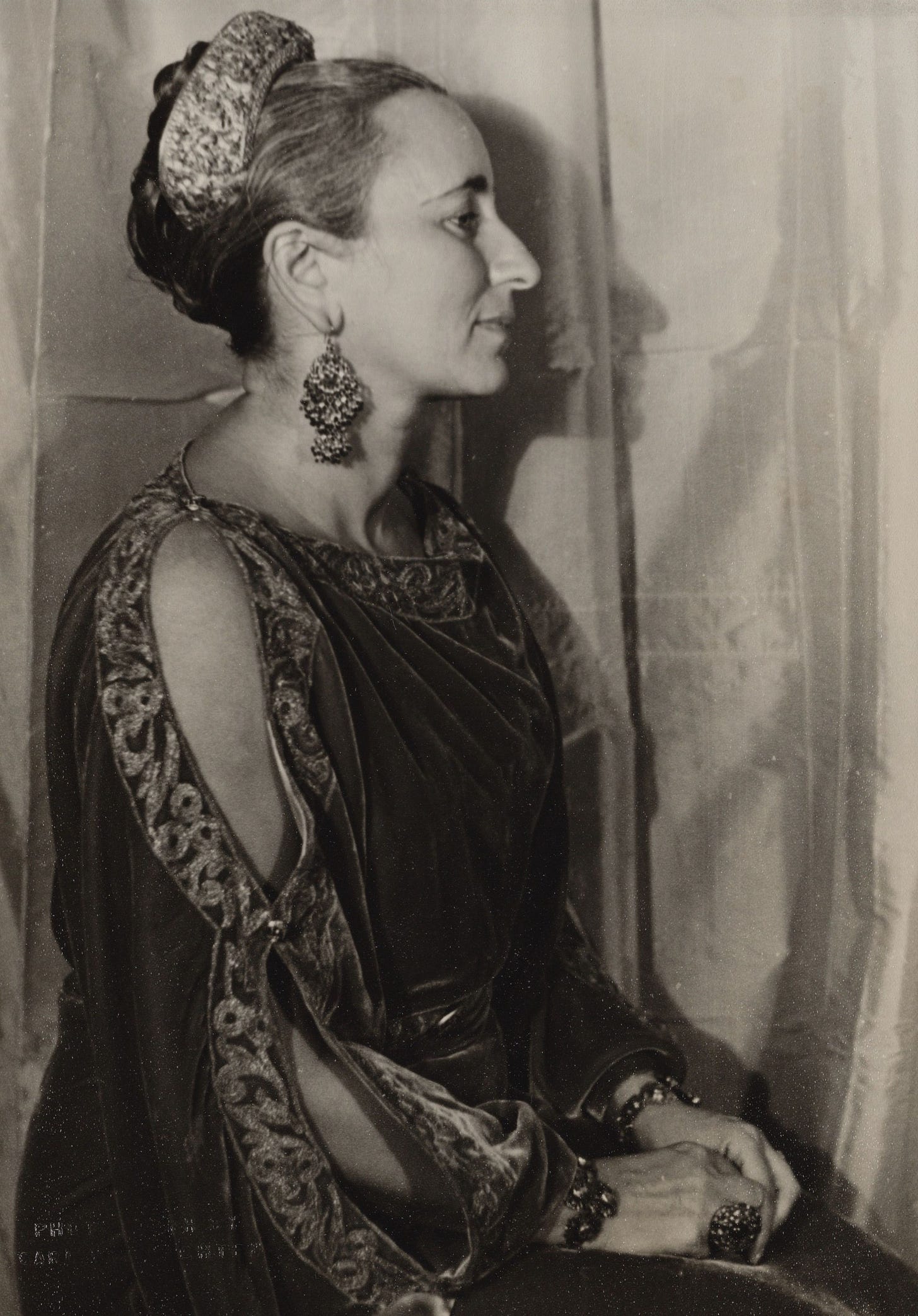
Susan, I’m so excited for you and your book, which is coming out in little over a week from now! Could you tell us a bit about who Bernardine Szold Fritz was and what made you want to write her biography? How did you first come across her fascinating life?
Bernardine Szold Fritz was a Jewish salon host from Peoria, Illinois, who moved to Shanghai in 1929 to marry Chester Fritz, her fourth husband. She was only thirty-three and a romantic at heart, so she was completely willing to try marriage for a fourth time. But when she got to Shanghai, her husband all but ignored her. She could have left and gone back to Paris, where she had been living as an expat, or back to the U.S. Instead, she opened her home as a salon, bringing together Chinese and foreign writers, artists, musicians, actors, and dancers. When her salon couldn’t accommodate everyone who wanted to attend, she started a theater company that carried on her salon work and much more!
My interest in her started back in 1995 when my mom and I walked into the gift shop at the Peace Hotel in Shanghai. There wasn’t much to buy, but my mom found a paperback of Vicki Baum’s novel, Shanghai ‘37. It’s set in a hotel based on the Cathay—the Peace Hotel’s original name—and includes a diverse group of characters from Russia, Germany, Japan, and more. I loved it and wanted to read more about this cosmopolitan city of the 1930s, so I found Emily Hahn’s memoir, China to Me. Bernardine appears on page 5 and is mentioned a little more in the beginning of the book. After that, I started noticing Bernardine’s name more—in Ken Cuthbertson’s biography of Emily Hahn and more recently in Taras Grescoe’s book, Shanghai Grand, a narrative about Emily, Sinmay Zau, and Victor Sassoon. Bernardine connected all three and I wanted to know more about her. I looked periodically for a biography and never found one. I think the tipping point happened in 2018 when I learned she was also from Illinois. And as I later learned, Bernardine was also a friend of Vicki Baum!
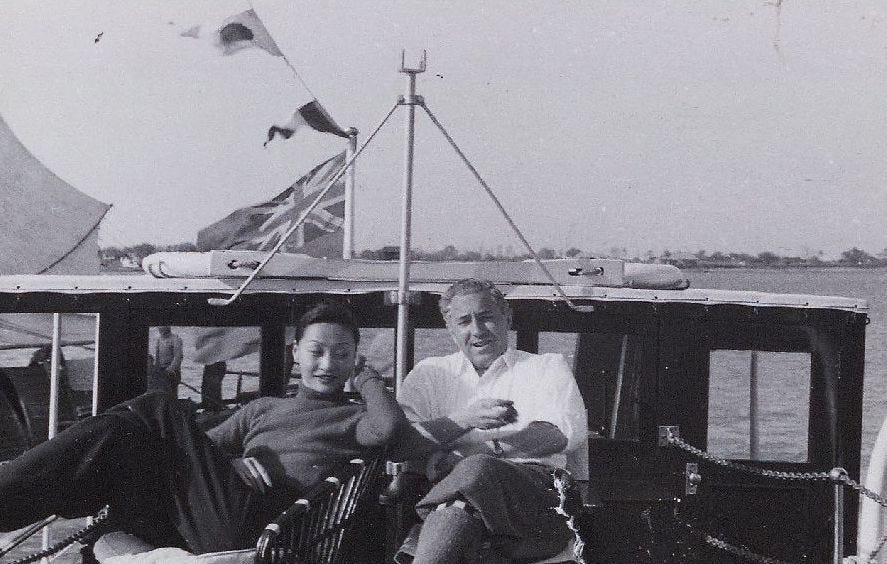
Like Bernardine, China has loomed large in your life. Your memoir, Good Chinese Wife, chronicles your experiences marrying into a Chinese family, and you also co-edited Hong Kong Noir, a collection of stories set in Hong Kong. Similarly, Bernardine’s Shanghai Salon focuses on Bernardine’s years in China. What was it like writing about a place where you’ve spent a lot of time within the context of Bernardine’s life?
When I started looking into Bernardine’s Shanghai years—which spanned 1929 to 1937—I expected to focus on her connections in the arts and her theater company. I knew she had been married a number of times, but wasn’t expecting to find that she had such a harrowing personal life, especially with her four husbands and her only daughter. In writing about her relationships while she was in Shanghai, I could draw from my own troubled marriage, especially since both my ex-husband and her husband Chester were pros at doling out the silent treatment. Some of the most dysfunctional scenes from my first marriage took place in Shanghai and other parts of China the summer my parents visited and my mom bought Shanghai ‘37, so when I read about Chester’s nasty treatment of Bernardine, I could immediately relate! There were certainly many moments in writing her story that I felt we’d had the same marriage in the same place! And while Hong Kong Noir obviously takes place in Hong Kong, not Shanghai, I felt even more prepared to write about the dark parts of Bernardine’s life. Although at first I thought I’d only be recounting a cheerful story of ways to bring people together!

You were able to track down several of Bernardine’s relatives who inherited Bernardine’s personal papers, including photographs from her time in China and some of the sharp-witted vignettes she wrote about the famous people she mingled with. You very kindly shared a few of these materials with me that were related to Anna May Wong, which I’m so grateful for. I never would have found them on my own. What was your research process like? And how did you end up connecting with Bernardine’s relatives?
It was all luck! Bernardine was all but unknown and she’d never published a book. I searched online in late 2018 and early 2019 and found she had papers at Yale. I planned to travel there the summer of 2019 to see what I could find. Since she only spent eight years in Shanghai, I wasn’t sure these papers would cover those years. I also found some letters at the Newberry Library in Chicago, mostly written a decade before she went to Shanghai. They were to her friend Sherwood Anderson and a few between Anderson and Bernardine’s third husband, the literary agent Otto Liveright. It was the first time I’d read something in her voice and I felt like I was slowly getting to know her.
Soon after that, at home I found an online article written by Bernardine’s granddaughter, Wongmo. The article was full of beautiful photos, many of which appear in my book. I wrote to the editor of this online publication and explained that I was writing a book about Bernardine when in fact I had no idea if I would ever find enough information about her to write more than an article. I asked this editor if she had Wongmo’s contact information. An hour later, Wongmo and I were messaging over Skype!
Wongmo shared some great stories about Bernardine and sent me a couple dozen photos. She also suggested I contact two of her cousins in California, Nancy Lilienthal in LA and David Szanton in the East Bay. I wrote to them and a couple weeks later they wrote back. I’m so glad I had written a memoir because they both read it after I wrote to them and I think all of their questions about me were answered in that book! I also think our Jewish connection really helped. They each had hundreds of pages of Bernardine’s paper—mainly unpublished vignettes she wrote in hope of writing a book someday—as well as photos, including several Bernardine took of Anna May in China. Since I was going to spend a week visiting my mom in Arizona a couple months after I connected with Nancy and David in early 2019, I was able to take a couple of day trips to each of their homes that week. It was much easier to do that from Arizona than from Chicago. I went to Nancy’s first and several days later when I flew to Oakland to meet with David, Nancy also made a day trip from LA and the three of us spent a wonderful afternoon talking about Bernardine and going through her papers. I not only found more material than I could use, but also formed lovely friendships with Nancy and David.
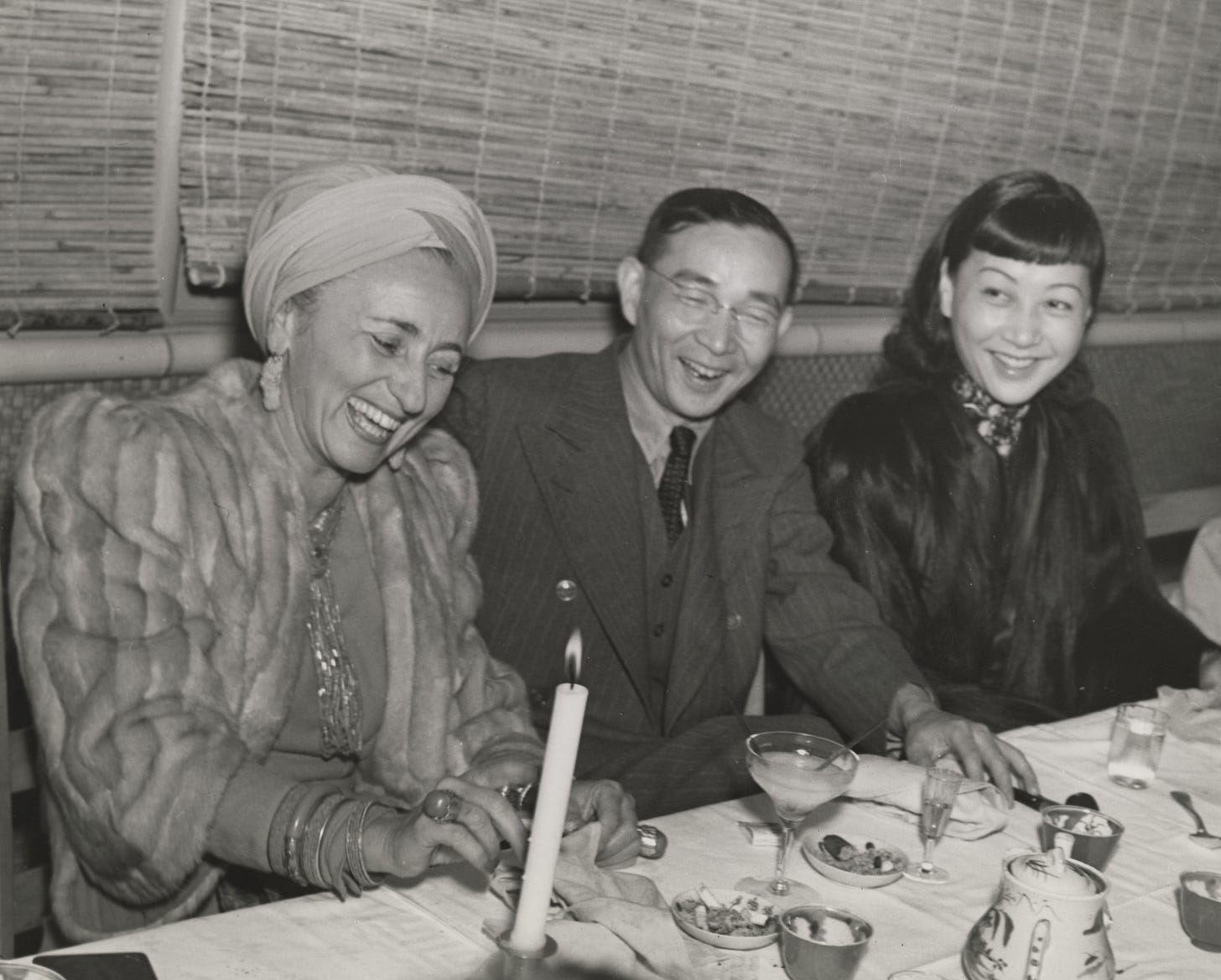
My final research trip in 2019—of course not knowing that I’d never be able to do this in 2020 or the years following—was to Shanghai. My older son was studying there, so I visited with my mom and younger son. One day we took a cab to Bernardine’s apartment in Shanghai. The front door was wide open, so we walked right in and saw an empty unit. It was massive and I could see how Bernardine could fit upwards of 150 a night at her salon!
I ended up not going to Yale, but instead ordered scans of letters from Bernardine’s papers there and from Emily Hahn’s papers at Indiana University. I also found online digital photos from Victor Sassoon’s papers at Southern Methodist University.
And through you I learned more about Bernardine’s friendship with Anna May, well into the 1950s, and love the photos you shared of Bernardine, Anna May, and Lin Yutang in LA. The best part about writing this book has been the friendships I’ve made. Bernardine continues to connect people four decades after she passed away!
How would you describe Bernardine and Anna May’s relationship? Did anything surprise you about their friendship?
I think at first Bernardine was not very open to a friendship with Anna May when they first met in London in 1934. Bernardine could be a bit of a snob when she didn’t know people. But I think more of it has to do with the movie industry. Bernardine’s first love was the theater and she didn’t look fondly upon the movies, although she certainly had her fair share of movie star friends like Butterfly Wu, Charlie Chaplin, Claudette Colbert, and of course Anna May. Bernardine was also an unreliable narrator. After that first letter to friends in France in which she writes that Anna May was nothing special, she then goes on to gush over Anna May in every letter after that. This change started when Anna May visited China in 1936. I’m guessing there wasn’t much time to get to know each other when they met in London.
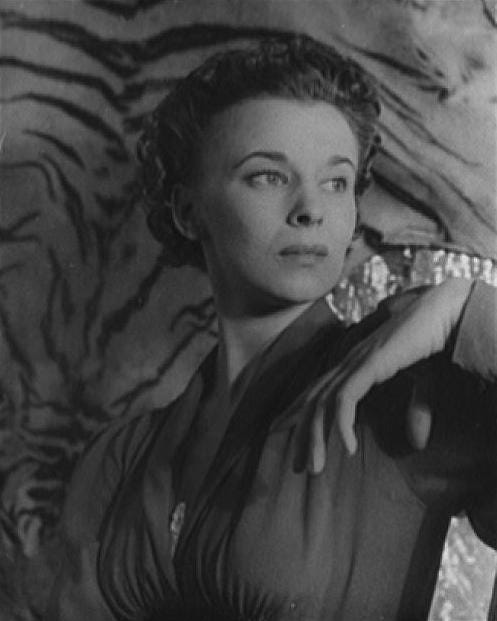
What surprised me most about their friendship was that Bernardine pushed Anna May to become a surrogate mother to her daughter, Rosemary. Bernardine did this with a lot of her friends, starting when Rosemary was still very young. When Bernardine asked Anna May to check up on Rosemary in New York, Rosemary was already in her twenties. In the letters that Anna May wrote to Bernardine, I can see a closeness that I also saw with Bernardine’s friends from Paris before she moved to Shanghai. I find it really interesting that a lot of Bernardine’s female friends from her Shanghai years were women who were about a decade younger. Anna May was nine years younger, as was Emily Hahn. But so was Bernardine’s sister, Aline, who came out to Shanghai to recover from TB but ended up directing a major play at Bernardine’s theater company. I think there may have been something a bit maternal about these relationships, which is ironic because Bernardine was not maternal at all with Rosemary.
How are you preparing for the book’s publication? And please tell us where we can find you and the book!
I’m trying to stir up interest in two Chicago-area events in early November, the first with Rachel DeWoskin, who starred in a Chinese soap opera almost thirty years ago, the same time I was living in Hong Kong and traveled frequently to China with my then-husband. Rachel has written a lot about China—including a China memoir and a Shanghai Jewish YA novel—and has a new book of poetry, absolute animal, out later in November, including a couple of Chinese poems in translation. Our event is going to take place at Exile in Bookville on November 8, a lovely bookstore in the building where Bernardine acted as a teen in Chicago’s Little Theatre!
I’m also going to have an event with Cristina Henriquez at our public library in the Chicago western suburbs on November 9. Cristina is another of my favorite authors and has a new book out around the time yours comes out. The Great Divide is a historical novel about the Panama Canal. I am reading it now and absolutely love it. I’m such a history buff and can see so many similarities between Old Shanghai and Panama City: it’s a significant port, it has relatively large Chinese and Jewish communities, and it has a history with American colonialism.
Thank you so much for this opportunity to chat! I cannot wait to hold your book in my hands!
You can follow Susan Blumberg-Kason on Instagram, Twitter, and her website. Her book Bernardine’s Shanghai Salon is out November 7th and available for pre-order here.

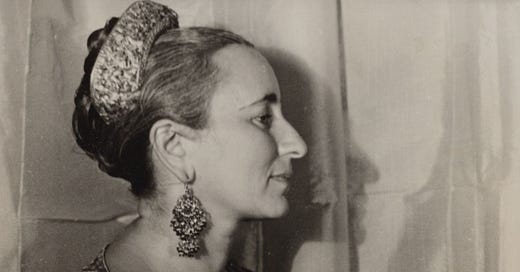



I LOVE this, Katie! Thank you, and thank Susan! Bernardine Fritz was another household name in my family, though I never really knew why. But 1929-1937 were the years when my father and aunt were turning 20 in Shanghai, and I'm sure Bernardine was instrumental in both their theater careers. I'll go back into the archives and see if I can connect some dots! Wonderful interview! Eager for the book!
Bernadine was a journalist in Russia as the Soviet Revolution of 1917. So, she met other Americans there, including John Reed, who wrote "10 Days That Shook the World".
She is one of the filmed "witnesses" in Warren Beatty's movie, "Reds".
Chester may get an undeserved bad rap. Whatever the reason or reasons for Bernadine's return to the US in 1936, it was a good call.
Chet was a fabulously rich fellow, known as "Mr. Silver"-the market maker for the metal when China was on the Silver Standard.
And so, directly or indirectly, he subsidized the Salon. Good it was that Shanghailanders, White Russia refugees, German Jews, [many, not all, rather new arrivals from Nazi Germany].
Chester has often been generous with his money and time. The photo of the two on the yacht is one of the most, if not the most, casually happy photo I have ever seen of Anna May.
This contrasts with the photo of her in front of a peasant farmer's house in the mountains of Shandong, in the article. Anna May looks frail, even fragile.
This would have been a few days after the May 9, 1936 "Incident"-an invitation for, a reception, as I see it, for an ambush, of Anna May in Nanking by the Kuomintang government.
From the very first substantial bio of Anna May on, I don't see this as a pleasant encounter; perhaps much, much worse for her.
The fact that, as reported in several places, that one of the participants was an underling of Dai Li, "China's Himmler" did not bode well for Anna May.
Chester was a country boy from North Dakota who had to quit college for financial reasons. Bright and very hard working, he lucked into a series of ever more important and lucrative jobs, leading to his position in commodities trading in Shanghai.
Some called the marriage odd or mismatched. Chet apparently did not know Bernadine was divorced 3 times prior to their marriage.
The decision for Bernadine's return turned out fortuitous. Chester bought her a mansion in the Hollywood Hills. He returned to California a year or two later. His memoir Ever Westward to the Far East: The Story of Chester Fritz. Chester mentions AMW cordially as Anna "Mae" Wong.
So, Chester, from everything I've read, had his own take on the failure of the marriage in 1944. He certainly had his grievances, which is typical of such things.
So, let's hear it for the lovely candid of Chet and Anna May in the yacht outside Shanghai. They do look as if they're having a great day!
several times at parties in LA.